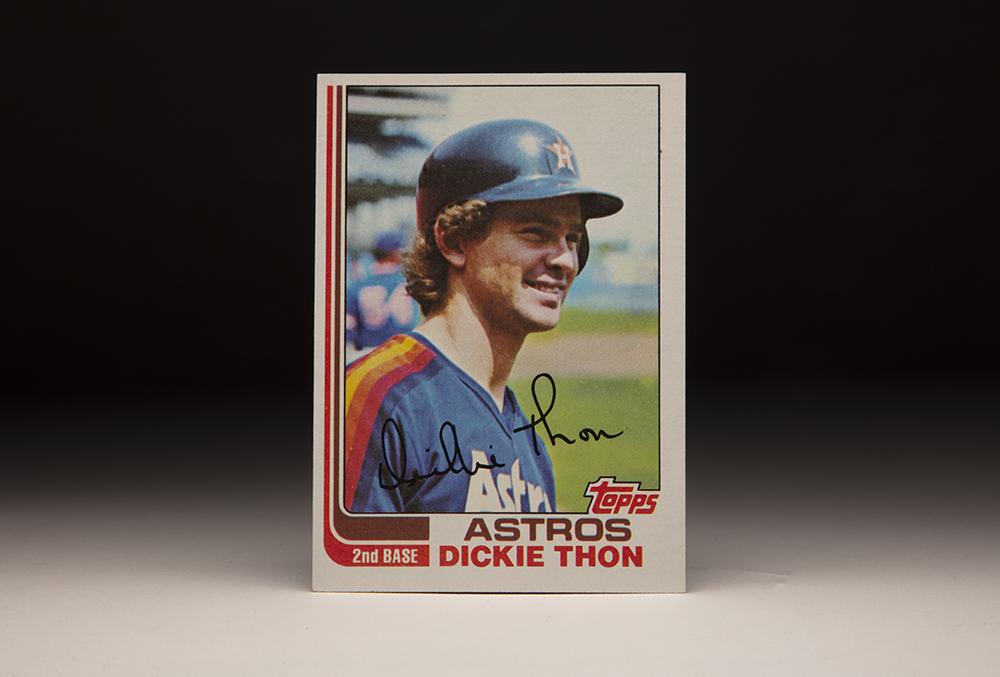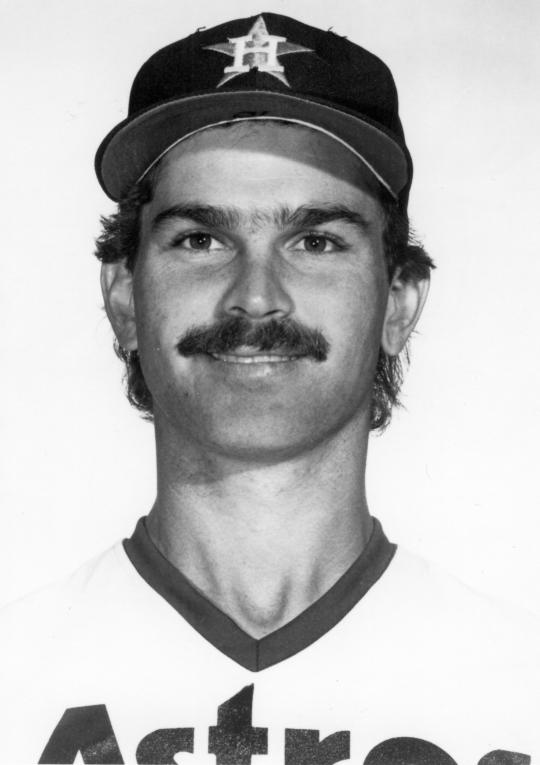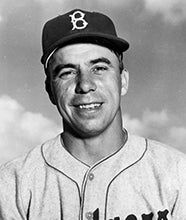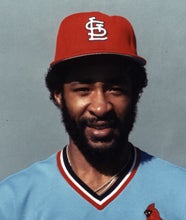- Home
- Our Stories
- #CardCorner: 1982 Topps Dickie Thon
#CardCorner: 1982 Topps Dickie Thon
When Dickie Thon entered the Houston Astrodome on April 8, 1984, he was arguably the best all-around young player in the game.
Thon left the Astrodome field that night on a stretcher after being hit in the face by a pitch from the Mets’ Mike Torrez. He would not play in the big leagues again that season – and though his career lasted through 1993, Thon never regained the abilities he had before being beaned.
His career remains one of the game’s great “what if” stories.
Born Richard William Thon on June 20, 1958, in South Bend, Ind., Dickie grew up in Puerto Rico, where his grandfather Fred starred on the baseball diamond and played briefly in the Dodgers’ organization.
Thon’s father, also named Fred, recalled future Hall of Famers like Larry Doby and Monte Irvin having dinner at their house during the Winter League season – and played youth ball with future Cooperstown members Orlando Cepeda and Roberto Clemente.
After an arm injury ended his baseball career, Fred Thon – Dickie’s father – enrolled at the University of Notre Dame, and Dickie was born in South Bend.
“Some people swear that they remember when Dickie played for St. Joe High School (in South Bend),” Fred Thon told the South Bend Tribune in 1994. “But except for when he was born, he’s only been to South Bend one other time in his life.”
Thon signed as an amateur free agent with the California Angels on Nov. 23, 1975. He spent the 1976 season with Class A Quad Cities of the Midwest League, where he hit .276 with 19 stolen bases and 46 runs scored in 69 games.
Thon began the 1977 season at Class A Salinas of the California League, hitting .316 in 56 games before earning a promotion to Triple-A Salt Lake City in June. He hit .288 in 77 games for the Gulls, finishing the year with a .301 batting average, 12 homers, 87 RBI. 95 runs scored and 24 stolen bases in 133 total games.
The season earned him an invitation to Angels Spring Training camp in 1978, and Thon advanced to among the final cuts before being sent back to Triple-A. But the power he exhibited in 1977 did not return in 1978 as his slugging percentage went from .437 to .317 as he hit .257 with one homer and 47 RBI in 130 games with Salt Lake City.
A heralded shortstop prospect after his 1977 season, Thon was moved to second base in 1978 but committed 17 errors there in just 87 games.
“Who knows what this season might bring?” Salt Lake City manager Jimy Williams told the Salt Lake Tribune after Thon was sent back to Triple-A in the spring of 1979. “Dickie could still make it to the big leagues as a shortstop, and if not he does have experience at second base.”
Thon made his big league debut on May 22, 1979, entering a game against the Brewers as a defensive replacement at second base. He recorded his first hit five days later and contributed regularly off the bench that summer as the Angels pursued their first postseason berth.
“I need to be more consistent both offensively and defensively,” Thon told the Los Angeles Times. “I’m learning all the time from both (manager) Jim Fregosi and (coach) Bobby Knoop. They really know this game.”
Thon finished the season batting .339 over 35 games as California won the American League West title. He made the ALCS roster but appeared in just one game against the Orioles, pinch-running for Merv Rettenmund in Game 2 and then entering the game as a shortstop before behind pinch-hit for by Willie Davis as an Angels’ rally fell short in the ninth inning.
Thon once again found himself back in Salt Lake City at the start of the 1980 season, but this time he came out of the box hot, hitting .394 with 28 RBI and 28 runs scored over 40 games before being recalled in late May. In his first game back, Thon went 5-for-5 against the Rangers and remained a constant in the Angels’ lineup for the summer months at second base, third base or DH. Then in September, Thon took over as the team’s starting shortstop.
In 80 games that year, Thon hit .255 with 32 runs scored. But with veteran shortstops Bert Campaneris and Freddie Patek already on the roster, the Angels’ swung a major trade on Dec. 10, 1980, acquiring Rick Burleson from the Red Sox. Suddenly, Thon had no place to play.
On April 1, 1981, the Angels traded Thon to the Astros in a one-for-one deal for pitcher Ken Forsch, who had requested a trade immediately following the 1980 season when Astros general manager Tal Smith was dismissed.
“The Angels have a need for pitching and I think Kenny will win more games for them than he ever did for the Astros,” new Houston general manager Al Rosen told the Associated Press. “And in Thon, we’re getting probably the outstanding young infielder in the game today.”
Rosen proved right on both counts. Forsch went 11-7 with a 2.88 ERA and an AL-best four shutouts in the strike-shortened season of 1981. Thon started the season as the Astros second baseman but found himself in a slump and was hitting just .125 through May. But after the season resumed in August, Thon hit .409 in 20 games to help Houston advance to the postseason.
Thon started at shortstop in three of the five NLDS games vs. the Dodgers, hitting .182 as Houston fell in five games. Then in 1982, Astros manager Bill Virdon alternated Thon and Craig Reynolds at shortstop before Thon took over for good in mid-June when Reynolds was sidelined with an inner ear infection. From June 16 through the end of the season, Thon started at short virtually every day and hit .290 in those 96 games with 27 doubles and 32 steals.
He finished the season with a .276 batting average, 71 runs scored, 31 doubles, an NL-best 10 triples and 37 steals. He had a 21-game hitting streak during the summer and at one point hit safely in 37 of 39 games.
“I knew I could play,” Thon told the Dallas Morning News. “I just needed a chance.”
Thon carried his hot bat into 1983 and was hitting .307 at the All-Star break, earning a spot on the NL squad. He recorded a pinch-hit single off Texas’ Rick Honeycutt in the fifth inning of the All-Star Game and remained in the game the rest of the way at shortstop.
“You always dream that you can be an All-Star,” Thon told the Dallas Morning News. “You work and work for that day to come true. It’s a good feeling. So far, everything has been going right for me. I just feel very confident about everything.”
Thon finished the year batting .286 with 177 hits, 28 doubles, nine triples, 20 homers, 79 RBI and 34 steals. His power numbers – which produced a .457 slugging percentage – were even more impressive considering his home field of the Astrodome, which featured cavernous dimensions.
Thon won a Silver Slugger Award, finished first among NL shortstops with 533 assists (breaking a string of four straight seasons where Ozzie Smith led the NL) and earned a seventh-place finish in the NL Most Valuable Player voting. His WAR of 7.4 was the best of any NL position player.
“I knew he had power,” Astros manager Bob Lillis, who took over from Virdon during the 1982 season, told the Times Record News of Wichita Falls, Texas. “But he has shown consistent power.”
Thon began the 1984 season with six hits in his first four games when he stepped to the plate against Torrez with two outs and a man on first in the bottom of the third inning of a scoreless game against the Mets on April 8. A pitch from Torrez struck Thon above the left eye near the temple, necessitating surgery to repair an orbital rim fracture.
A photo of Bob Lillis holding Thon’s head while his shortstop lay on the ground ran in thousands of newspapers across the country.
“He’s our engine,” Lillis told United Press International. “He makes us go.”
The fracture healed, but subsequent swelling behind the left eye resulted in a blind spot in his vision.
“When there’s a scar behind the retina like Dickie had,” Astros general manager Al Rosen told The New York Times, “I’m told that it’s like crumpled tin foil. You can spread it out, but it will never be completely smooth again.”
Within a month of the beaning, rumors abounded that he might never play again because of vision issues.
Thon tried to quelch those rumors via the national media.
“I’ll be back, and I won’t have any fear,” Thon told United Press International.
Thon did not play in the big leagues again in 1984 but appeared in five games in the Arizona Instructional League before playing in the Puerto Rican Winter League.
“Sometimes I ask why it happened,” Thon told the New York Daily News while struggling to find his game in the Puerto Rican Winter League. “But I have faith. I don’t feel sorry. At least I’m alive.”
Thon’s vision in his left eye, which was 20/300 after the hit by pitch, had improved to 20/40 by the spring. He made the Opening Day roster with a strong spring and started the Astros’ first nine games at shortstop, but his power was slow coming around. On May 19, the Astros placed Thon on the 15-day disabled list at his own request.
“Dickie told me personally at home last night and then came in early today before the game and expressed his concern over his playing ability,” Rosen told the Associated Press. “He’s had continuing problems with blurred vision. His career is in jeopardy, and we’ve done everything for him that we can.”
Thon returned in mid-June and hit better as the season went on, finishing with a .251 batting average, six home runs and 29 RBI in 84 games. Now a free agent, Thon returned to the Astros on a two-year deal worth a reported $1.275 million.
In 1986 – as he had in previous seasons – he shared time at shortstop with Reynolds, batting .248 with three homers and 21 RBI in 106 games as the Astros won the NL West title. He appeared in all six games of the NLCS vs. the Mets, starting three of them and hitting a home run in Game 4 that gave Houston a 3-0 lead in a game the Astros won 3-1.
“It didn’t mean anything except it helped us win the game,” Thon told the Philadelphia Daily News in response to a question about whether the home run indicated he had fully recovered from his injury. “It was a game we had to win.”
The Mets went on to win the series, with Thon recording three hits over 12 at bats. He would not play in the Postseason again.
Thon’s vision problems resurfaced in the spring of 1987, and he left the team without permission in the middle of Spring Training. At one point, he considered retiring.
He returned to the team in May but could not regain his batting stroke. On July 6 – with his batting average at .212 and with just one homer in 66 at bats – Thon announced he was leaving the team again.
“I don’t want to say I’m going to retire,” Thon told the Associated Press. “It’s difficult to walk away from a game I’d do anything to play. I’d do anything to play again.” Thon did not play again in 1987, appearing in just 32 games. His two-year deal expired, Thon signed a one-year, $300,000 deal with the Padres on Feb. 18, 1988. With the pressure of being a starter now behind him, Thon made the Opening Day roster as a bench player. The Padres’ first series of the year was in Houston, where Thon was flooded with questions about his vision. “I just wish,” Thon told the Los Angeles Times, “that all of this would go away.” Thon’s play made it so as he appeared in 95 games that season, hitting .264 while stealing 19 bases. “Will I ever be the player I was?” Thon asked rhetorically. “I don’t know. But I do know I’m not worried about it anymore.” Following the season, Thon asked to be traded – and the Padres sold his contract to the Phillies on Jan. 27, 1989. He won the starting shortstop job in Spring Training and proceeded to have his best year since 1983, hitting .271 with 15 homers and 60 RBI in 136 games. He warmed up as the season went on, hitting .311 with nine homers after the All-Star Game. On Feb. 2, 1990, the Phillies rewarded Thon with a one-year deal worth $1.1 million, avoiding an arbitration hearing. “With all he’s gone through in the past, this case was filled with a lot of special circumstances,” Ed Wade, the Phillies’ player personnel administrator, told the Philadelphia Inquirer. “We recognize that Dickie is all the way back, and we expect him to do the job for a long time.” Thon played in 149 games in 1990, hitting .255 with eight homers and 48 RBI. He returned to the Phillies on a one-year, $1.25 million deal in 1991 and posted similar numbers to 1990: hitting .252 with nine homers and 44 RBI in 146 games. But as the 1991 season progressed, it became clear that the Phillies would look elsewhere at shortstop in 1992. “I’d like to play every day, either with this team or somebody else,” Thon told the Camden Courier-Post toward the end of the 1991 campaign. “I’m not ready to go to the bench yet.” The Texas Rangers signed Thon to a free agent deal on Dec. 16, 1991, and installed him as their shortstop. But an arm injury landed Thon on the disabled list in August and he appeared in only five games in the season’s final eight weeks, finishing with a .247 batting average in 95 games. Thon moved onto the Brewers in a bench role in 1993, hitting .269 in 85 games. He signed with the Athletics for the 1994 season but announced on March 2 that vision problems were forcing him to retire. “It’s a tough break,” Oakland manager Tony La Russa told McClatchy News Service. “He was starting to play when I was starting to manage, and he’s always a guy I said I’d like to have on my club. He looked pretty good at the plate, but there was definitely a time or two, now that I think about it, that defensively, he didn’t really react like I know he could. He told Carney (Lansford) that he was having a problem with pop-ups.” His career now over, Thon finished with a .264 batting average with 193 doubles, 71 homers and 167 stolen bases. But for a couple years in the early 1980s, Dickie Thon may have been the best all-around shortstop in baseball. “As a shortstop, Dickie’s not Ozzie Smith…no one is,” Rosen told The New York Times in Spring Training of 1985. “But he can play with Marty Marion, Pee Wee Reese, Phil Rizzuto…that’s how good Dickie is. He was easily one of the five best players in the game.”
Craig Muder is the director of communications for the National Baseball Hall of Fame and Museum
Related Stories
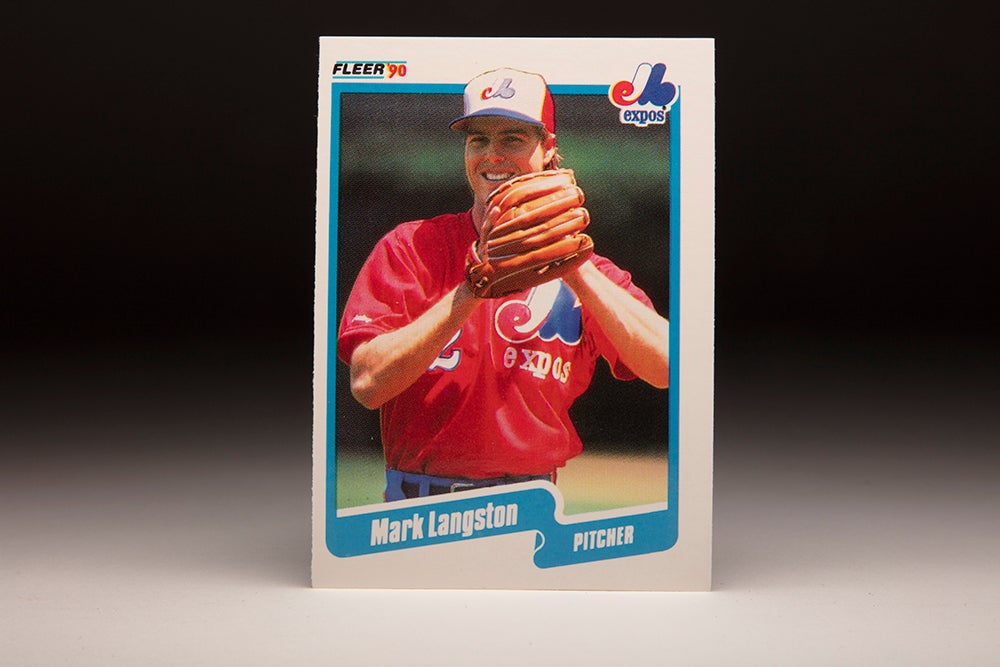
#CardCorner: 1990 Fleer Mark Langston

#CardCorner: 1979 Topps Mike Norris
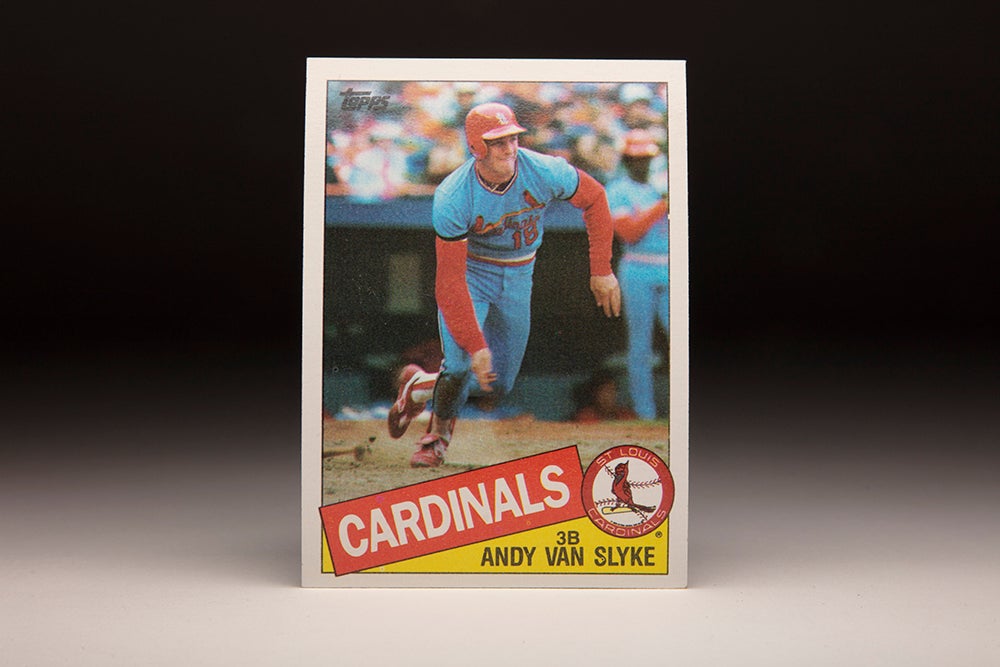
#CardCorner: 1985 Topps Andy Van Slyke
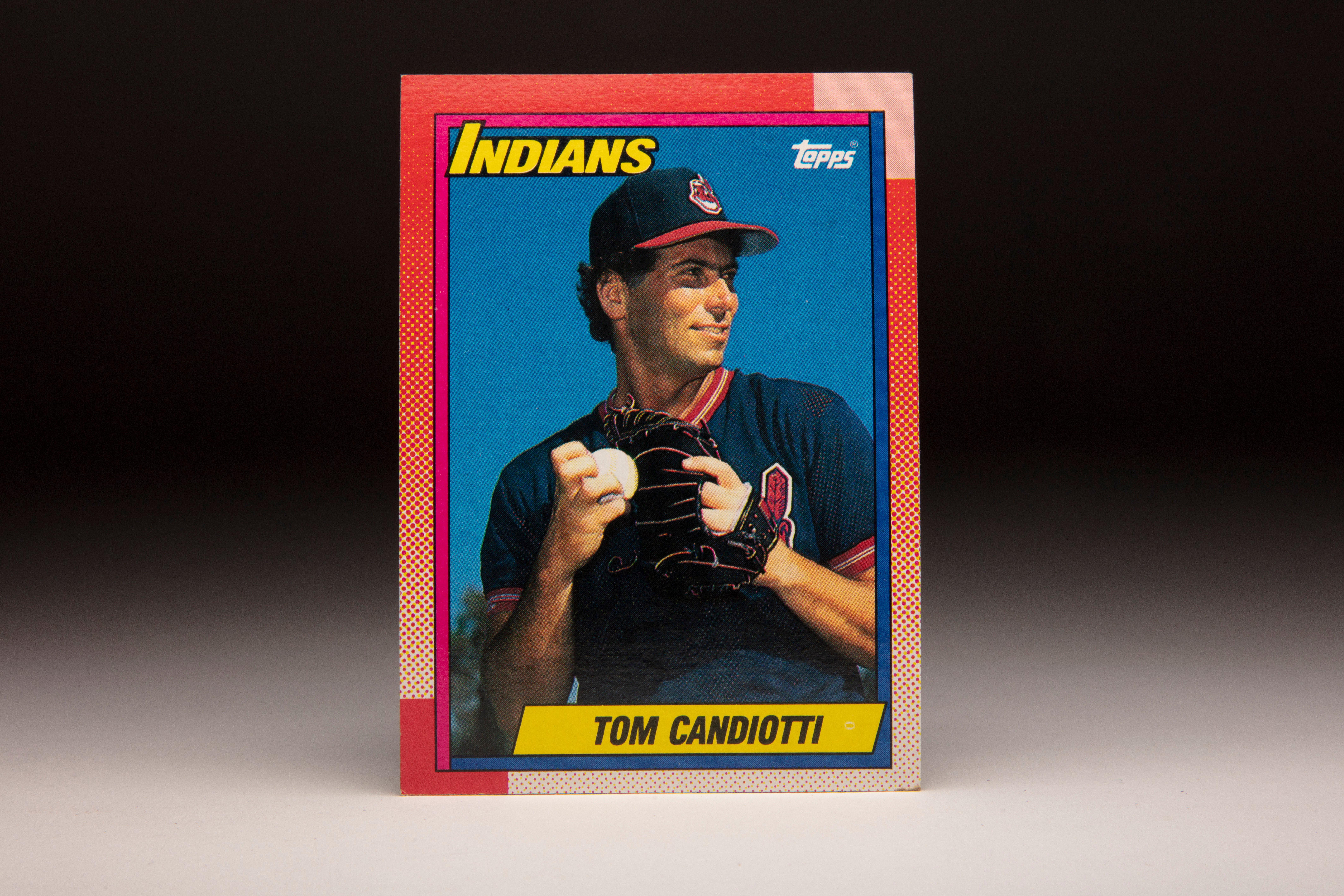
#CardCorner: 1990 Topps Tom Candiotti

#CardCorner: 1990 Fleer Mark Langston

#CardCorner: 1979 Topps Mike Norris

#CardCorner: 1985 Topps Andy Van Slyke


